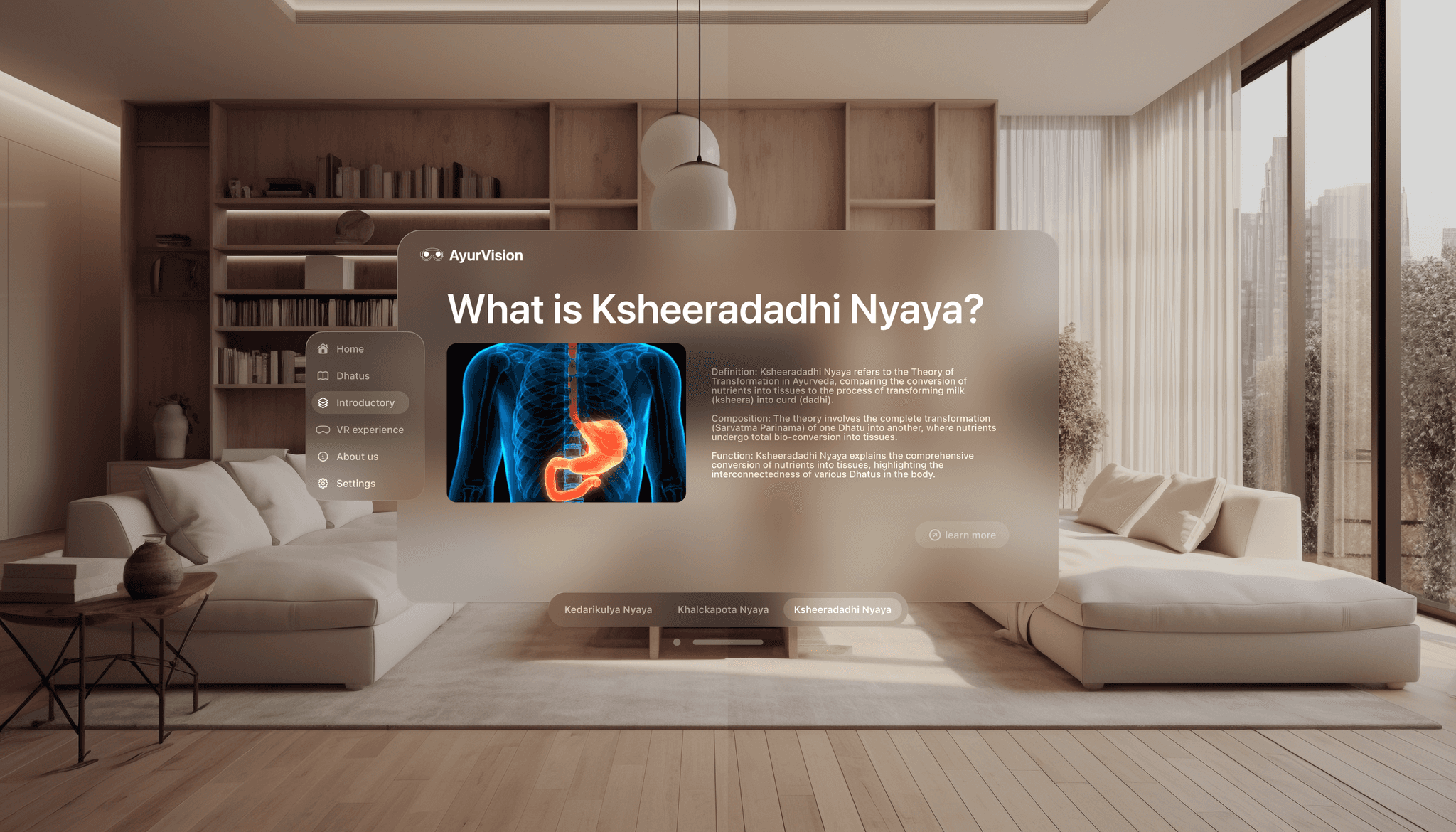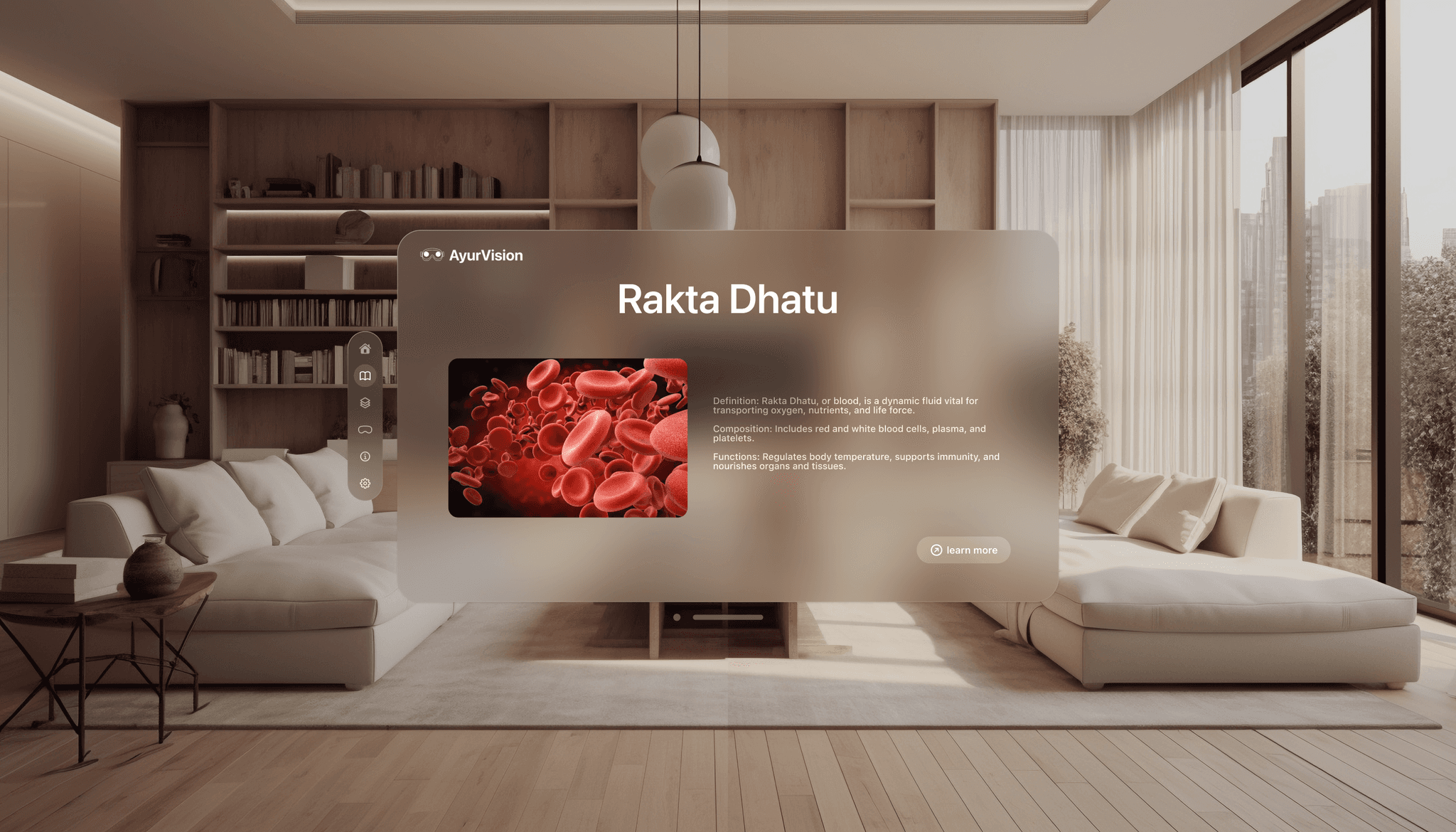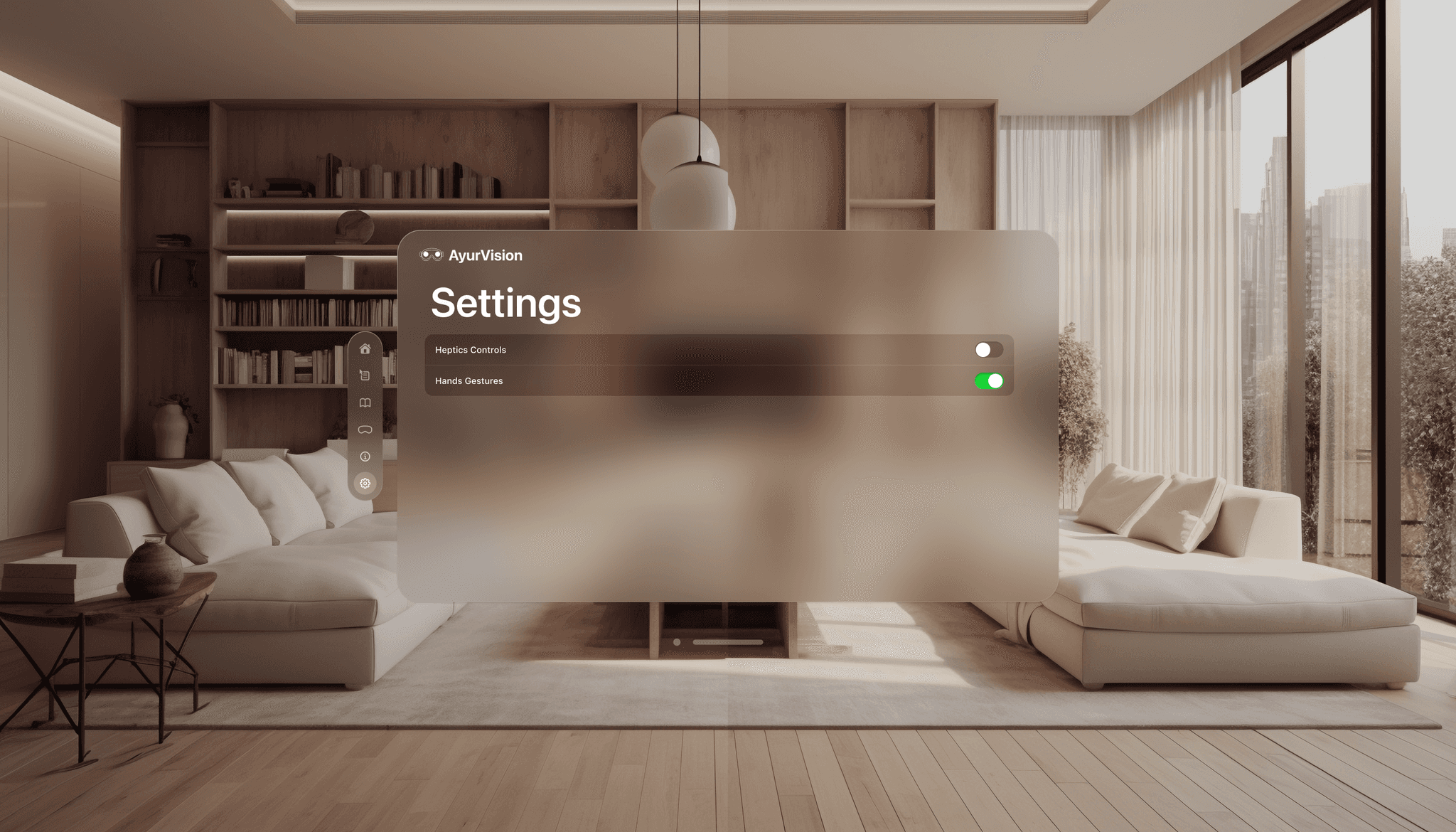Crafting AyurVision—A Journey into Ayurvedic Learning Through VR
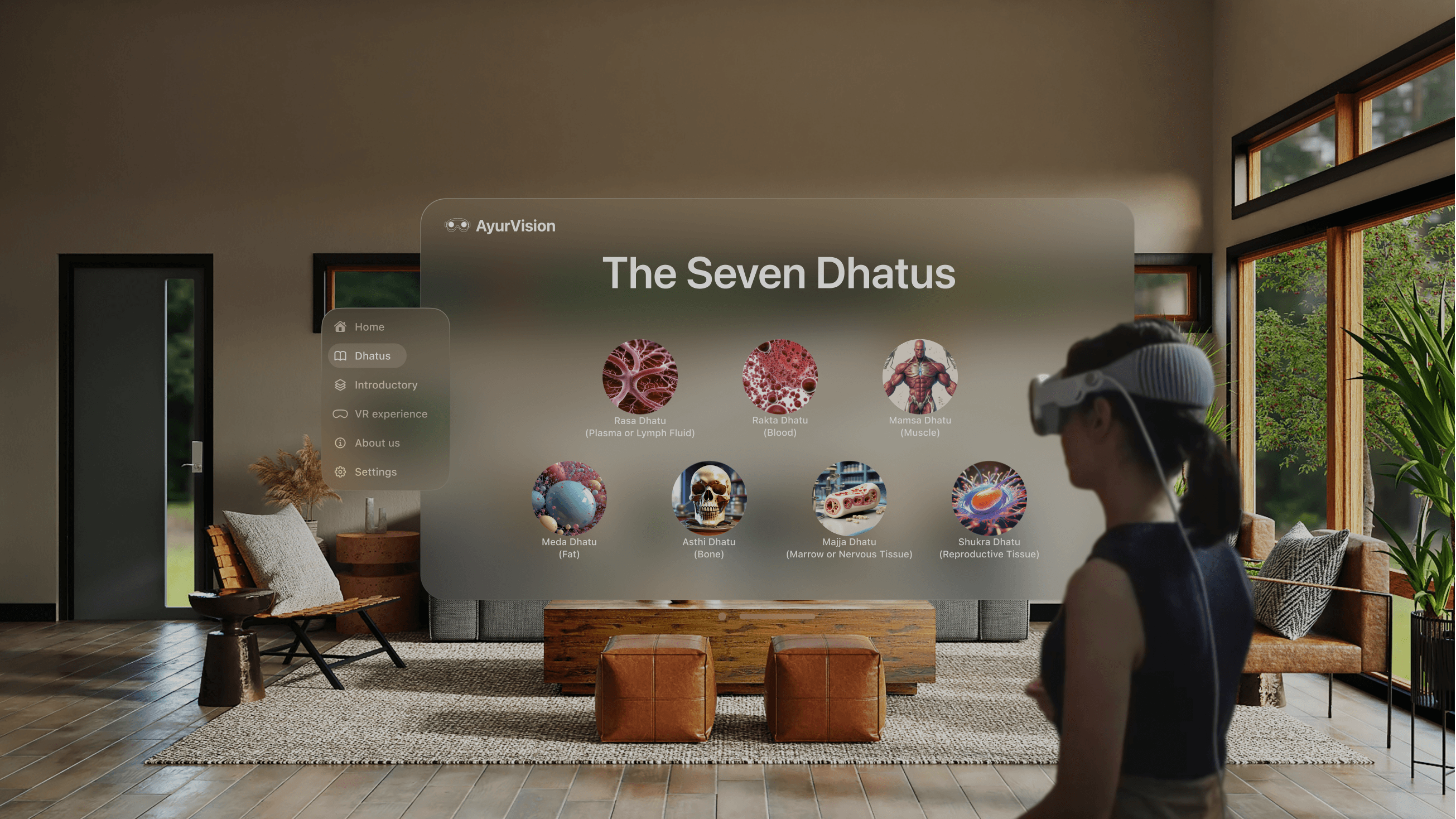
Imagine stepping into a world where ancient Ayurvedic theories come to life, not just as text but as an immersive experience. That’s what we set out to achieve with AyurVision, a groundbreaking project developed for the Smart India Hackathon (SIH) 2023
Our challenge?
To create an engaging and educational VR experience that would help students grasp complex Ayurvedic concepts in a spatially realistic environment.
Problem statement:
The Ministry of AYUSH presented us with a unique problem statement. The task was to demystify three key Ayurvedic theories of tissue nourishment—Ksheeradadhi Nyaya (Transformation), Kedarikulya Nyaya (Transportation), and Khalckapota Nyaya (Selection). These concepts, while profound, are not easily understood through traditional learning methods. Our goal was to make them accessible and engaging through Virtual Reality.

What are the main objectives?
Understanding Core Concepts: Begin by grasping the three core Ayurvedic theories (Ksheeradadhi Nyaya, Kedarikulya Nyaya, Khalckapota Nyaya) written in Sanskrit to accurately translate and represent them in a virtual environment.
Analyzing Traditional Teaching Methods: Explore how Ayurvedic students traditionally learn these theories, identifying challenges and limitations in the current methods.
Enhancing Traditional Learning: Investigate how traditional learning methods can be enhanced using VR technology, providing a more immersive and interactive experience.
Visualizing Nutrient Flow and Energy Conversion: Develop an understanding of how food is converted into energy and how nutrients flow through the body, and represent these processes spatially within the VR environment.
Integrating Micro-Interactions: Implement micro-interactions within the spatial environment to enrich the learning experience, making complex concepts more accessible and engaging.
Interrelating Ayurvedic Theories: Clearly illustrate how the three Ayurvedic theories are interrelated, providing a cohesive and comprehensive learning experience.
Immersive Learning Experience: Create a VR environment that immerses users in the Ayurvedic theories, allowing them to experience these concepts firsthand and reinforcing their understanding through interaction.
Design Strategy: Blending Tradition with Innovation:
Our approach to the project was deeply rooted in collaboration with Ayurvedic experts to ensure the accuracy of content. The design strategy revolved around creating an environment that was both educational and engaging. We wanted users to not only see but also interact with these ancient concepts, allowing them to manipulate and explore the principles of Ayurveda in real-time.
To achieve this, we began with desk research to understand various terminologies related to Ayurvedic teaching. This was followed by conversations with team members, Ayurvedic practitioners, and students to gain a deeper understanding of the subject matter. These discussions led to actionable insights and ideation, which guided the direction of our project.
We then moved on to finalizing the requirements and features of the VR experience, ensuring that every aspect was aligned with the learning objectives. We defined a clear user flow to map out how users would navigate through the VR environment.
Understanding the intricacies of designing in a spatial environment was crucial, so we dedicated time to research and ideation, focusing on how to effectively translate complex Ayurvedic theories into an interactive and immersive experience. This process involved meticulous wireframing, visual design, and documentation to ensure a seamless and user-friendly interface.
Additionally, we invested effort into understanding the Oculus VR terminologies and how to best leverage the platform's capabilities to deliver an impactful educational experience. This comprehensive strategy allowed us to create a VR solution that not only met but exceeded the expectations of both educators and students in the field of Ayurveda.
Who are the Users?
Our primary users were Ayurvedic students and practitioners.
Solution Breakdown
Understanding VR and Spatial Environment Design: Before diving into the visuals, I needed to get a firm grasp on VR and spatial environment design. I spent time reading articles, particularly focusing on how Apple designs spatial user interfaces for their Apple Vision Pro. This research was crucial in shaping my approach to the project's design elements.
Font Selection: The font I chose for this app is SF Pro, which is an Apple font. I opted for this font because it exudes a clean and formal vibe, aligning perfectly with the professional and educational nature of the project.
Inspiration from Apple Vision Pro UI/UX: I drew significant inspiration from the Apple Vision Pro's user interface and experience. The elegance and functionality of Apple's design language served as a guiding framework for the aesthetic and interaction patterns I aimed to achieve.
Subtle UI Background Blur: To enhance the visual appeal and readability of the interface, I incorporated a slight minimal blur in the UI background. This subtle touch added depth to the spatial environment, making it more immersive for the users.
Sketching and Wireframing: With a solid foundation in place, I began the process of sketching and wireframing the interface. This phase involved discussions with team members, leading to ideation and experimentation that eventually culminated in the final UI.
Interactive Elements: To heighten the immersive experience, we integrated haptics into the VR world. This added a tactile dimension to the interactions, making the learning process more engaging and memorable for users.
Usecase Diagram

Workflow Diagram
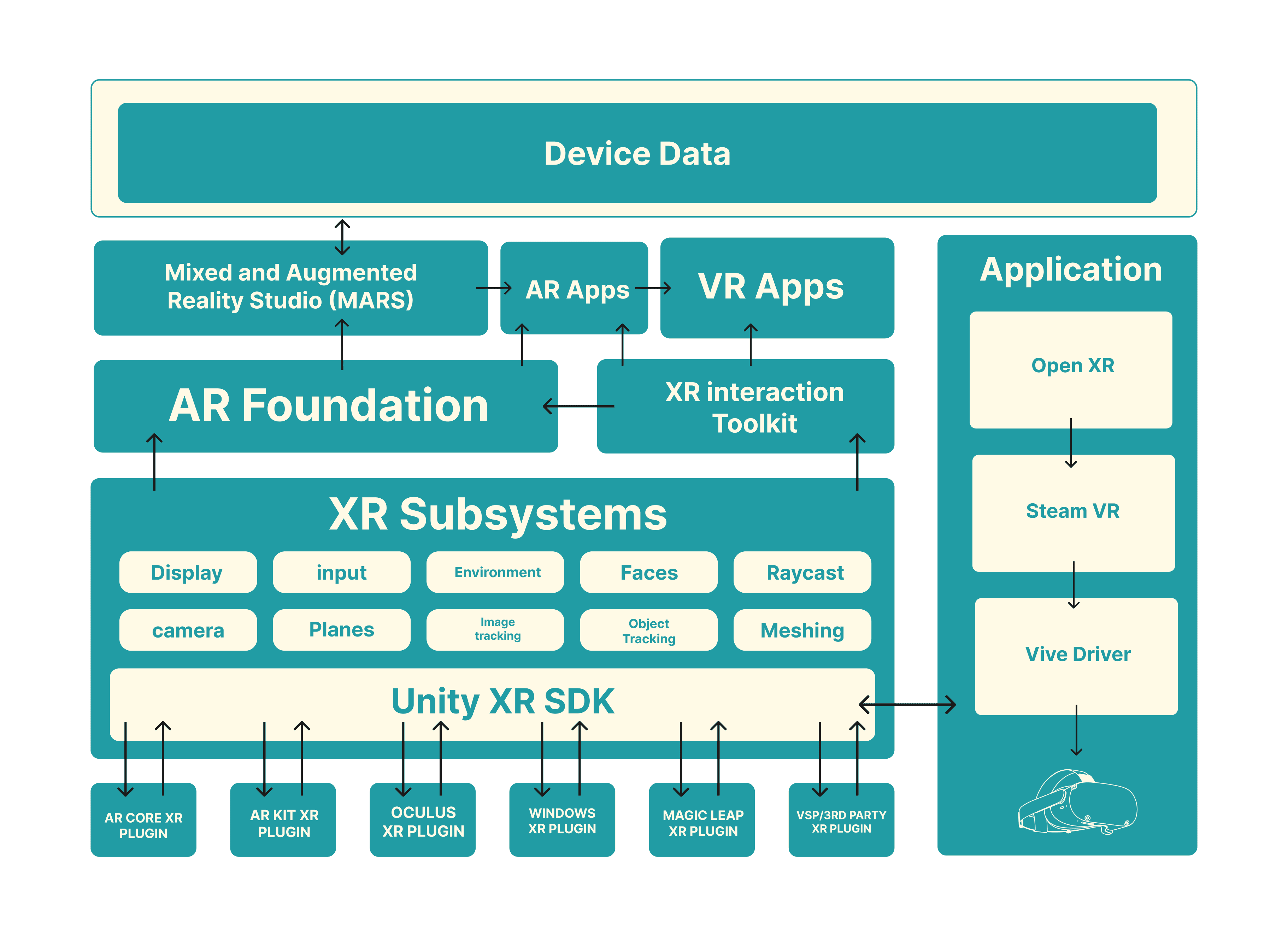
Wireframing & Sketching
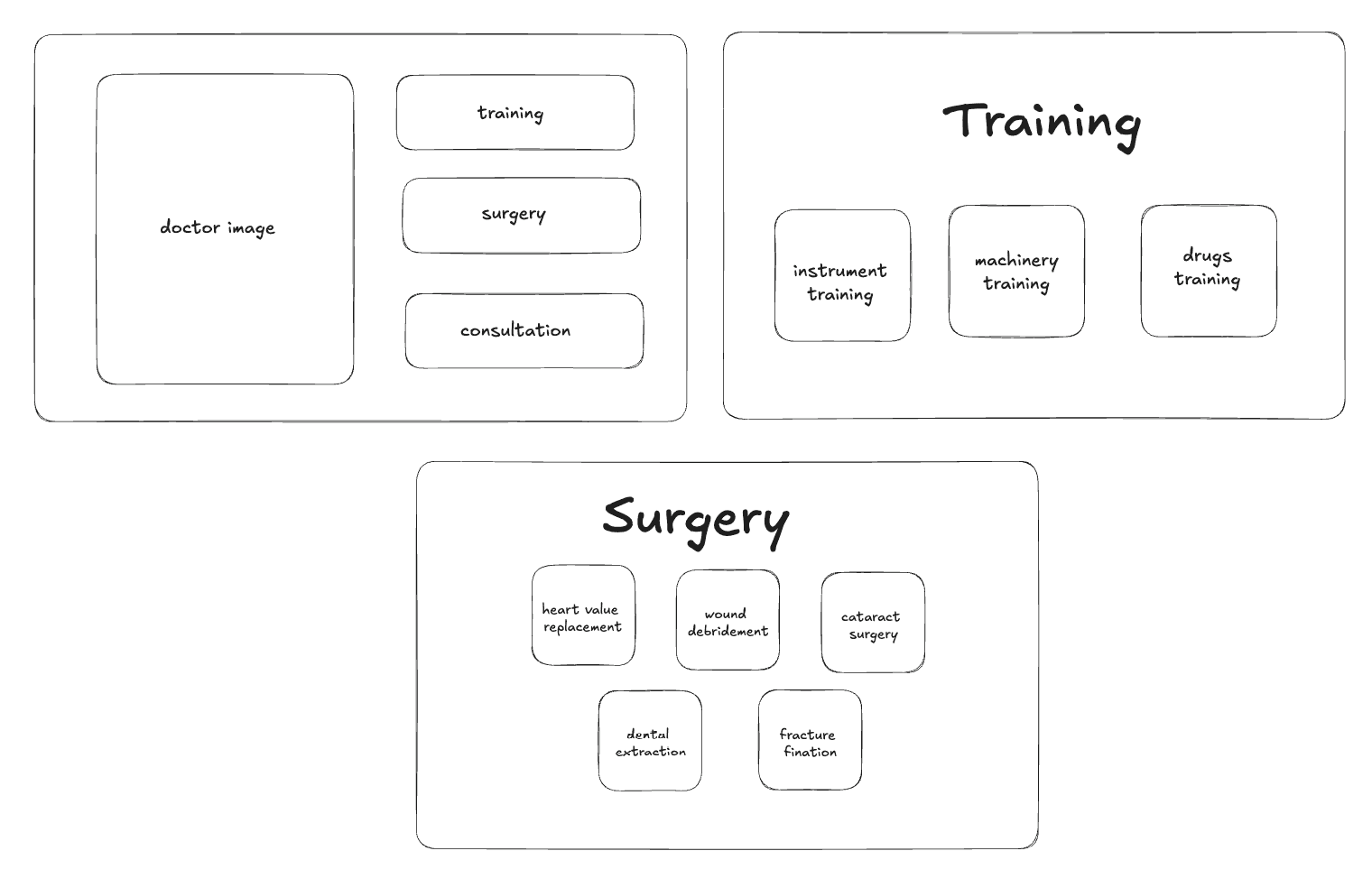

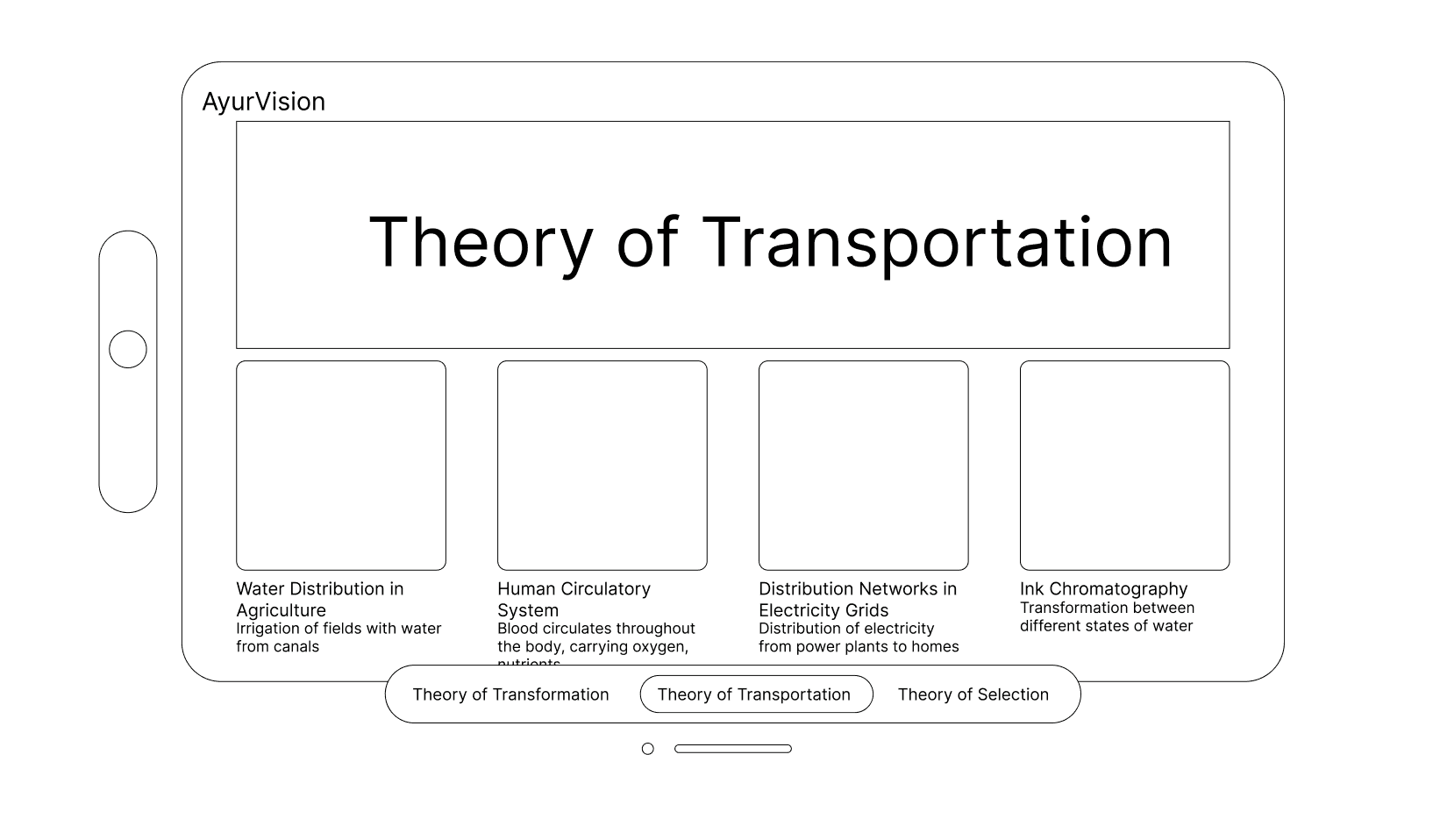
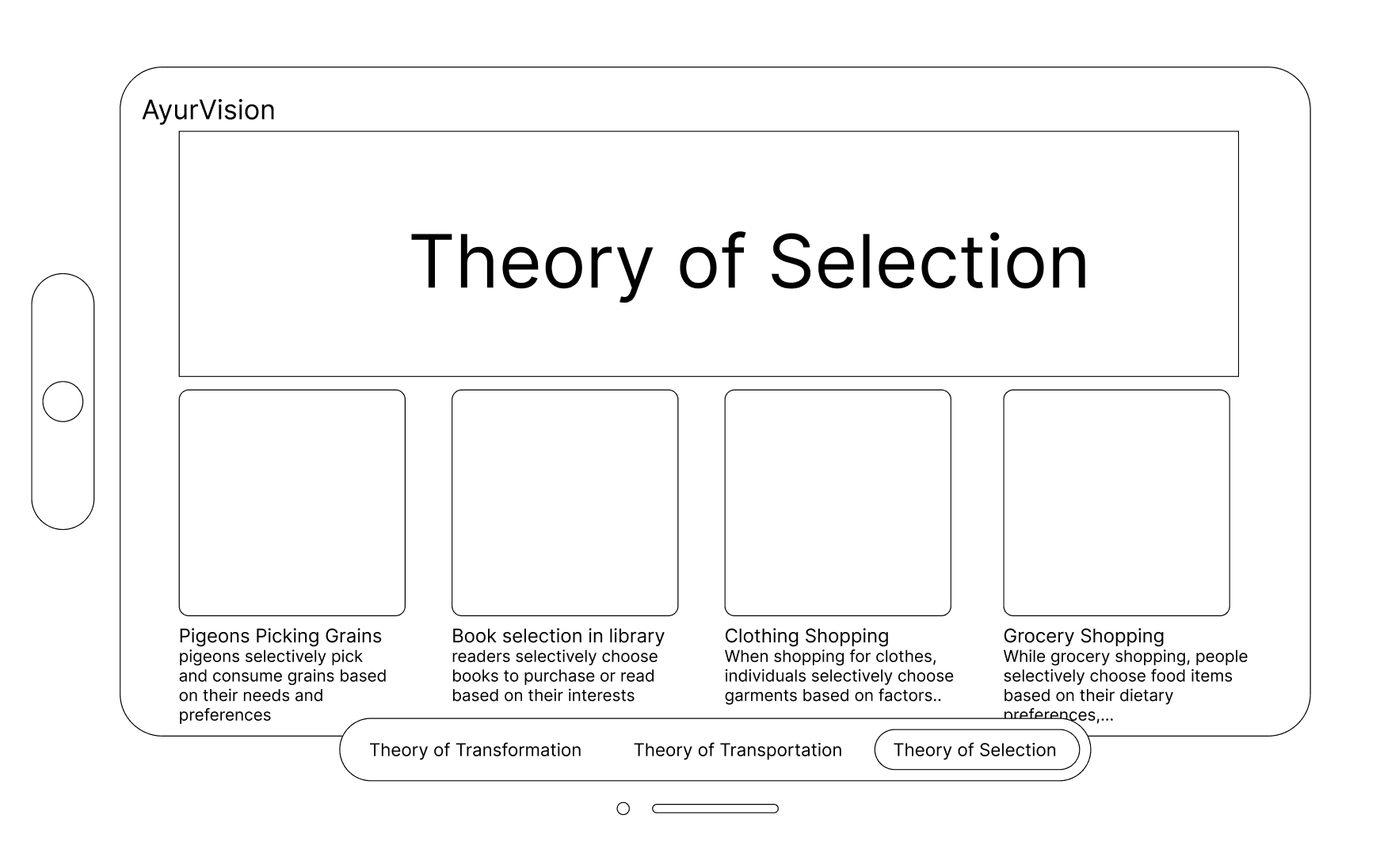
Ideation & Initial Designs

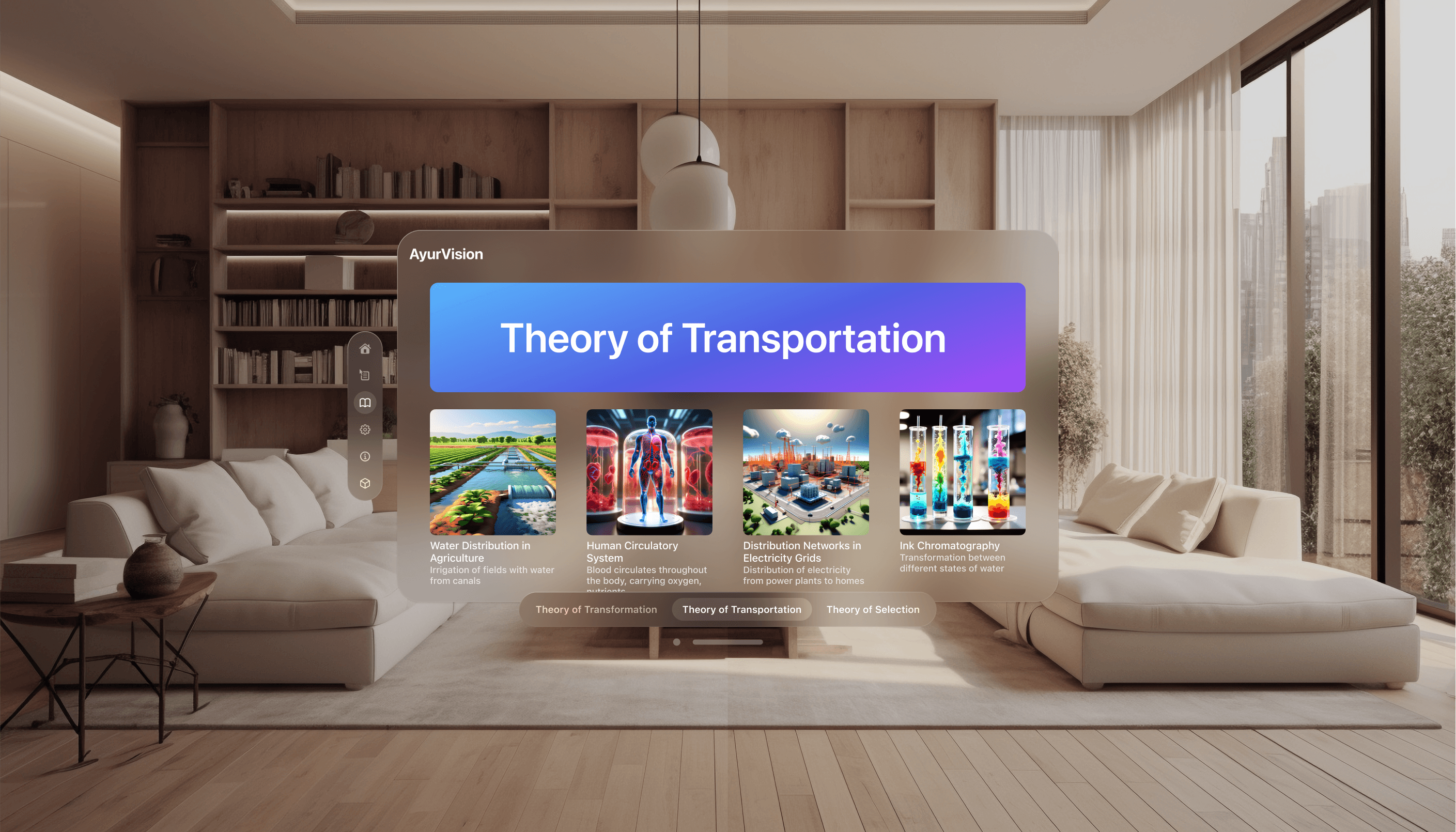
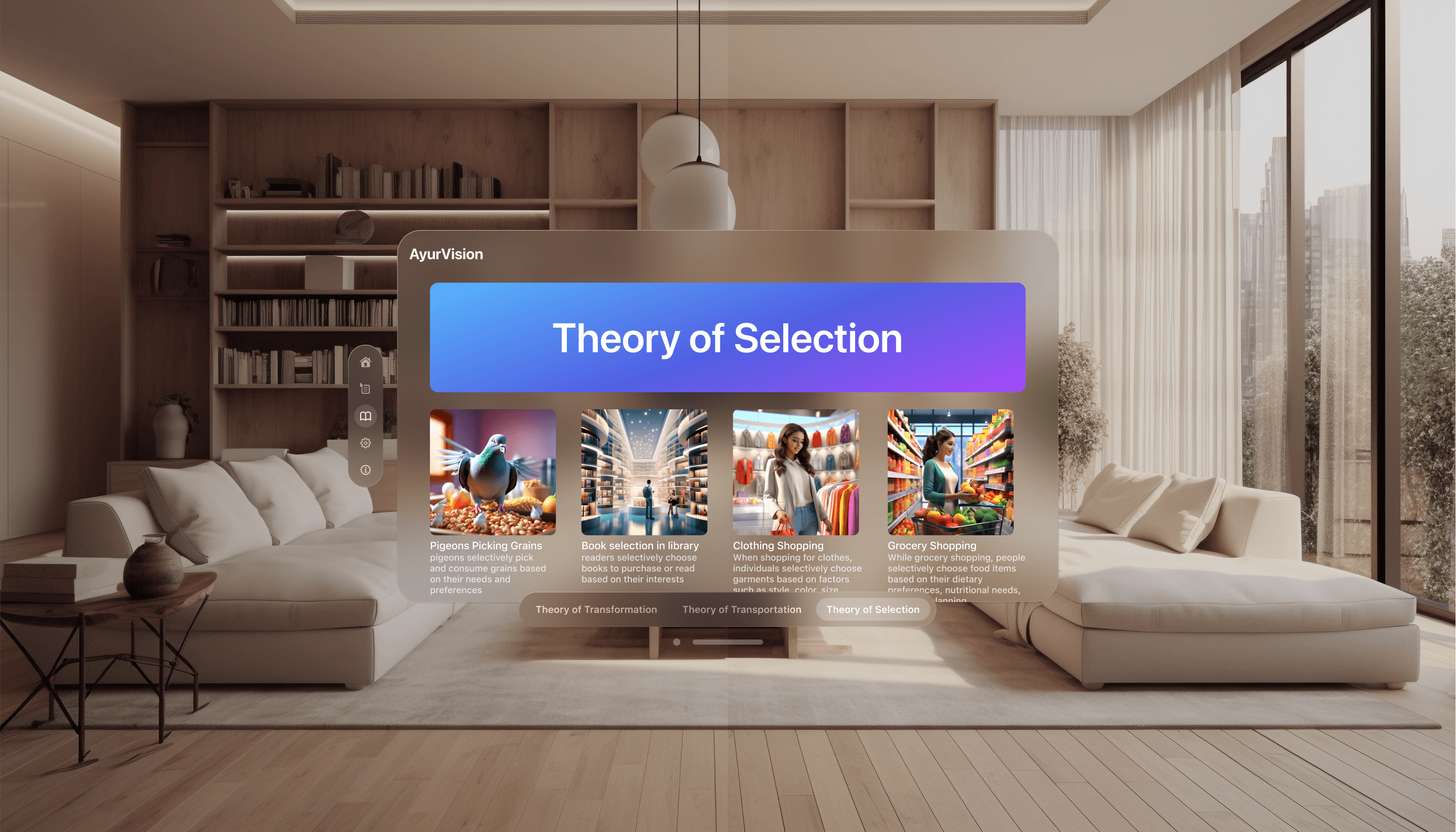
In the end, we won SIH 2023🥳
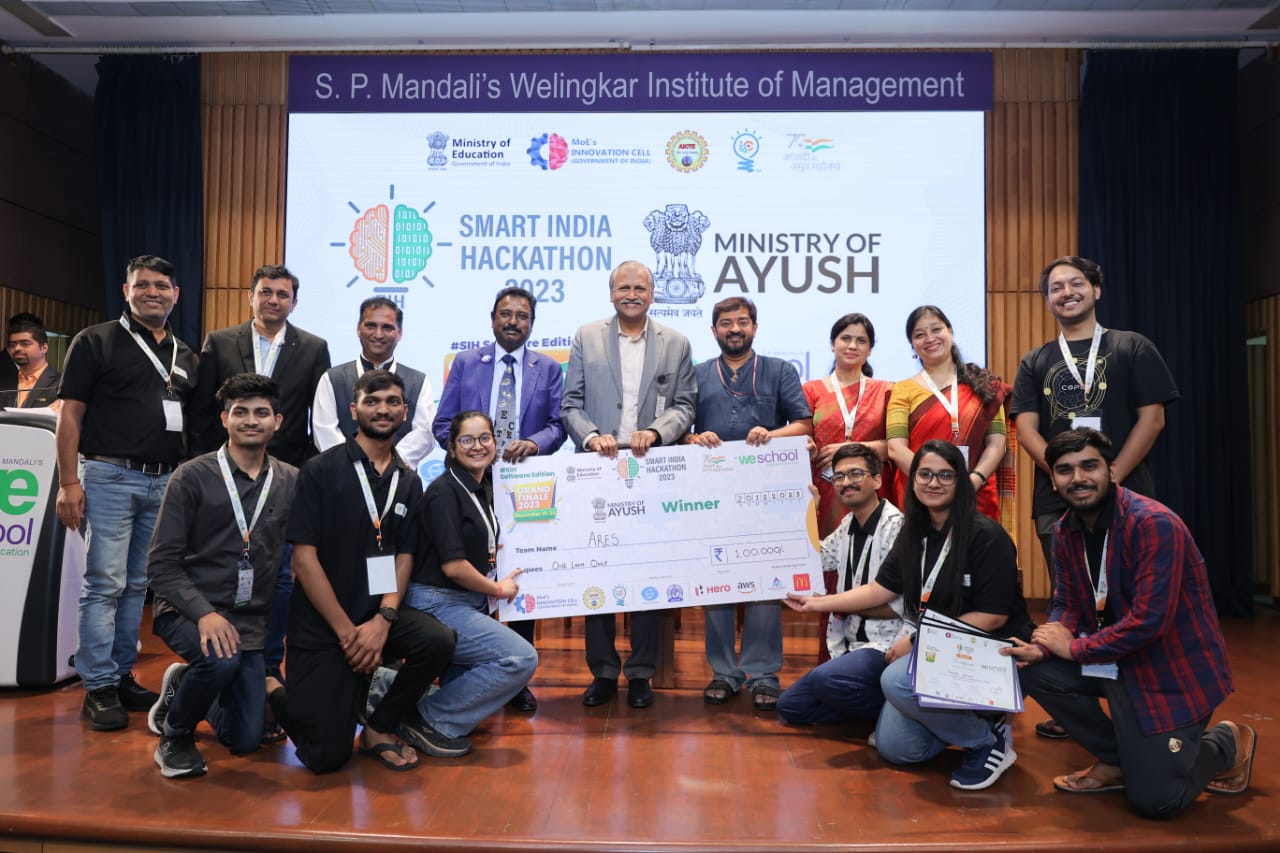
Click here to view the tweet
✨Special Thanks to my all Team Members and Mentor
Designed and developed by Team_ARES✨
" Updesh Pratap Singh , Alok Kushwaha , Wilson Daniel , Vanshika Agrawal , Anamta Rehman , and Our Mentor Siddhartha Satyarthi "
Demo Video
Checkout the demo video:
Explore the final designs
I’ve detailed the final UI designs of AyurVision in my Figma files. These designs illustrate the user interface and interactions within the VR environment, showcasing how each element contributes to the educational experience.

Project Overview:
Development of Virtual Reality (VR) technology for Dhatuposhana Nyaya
Date:
Dec 21, 2023
Organization
Ministry of AYUSH
Category
Virtual Reality, SIH'23


